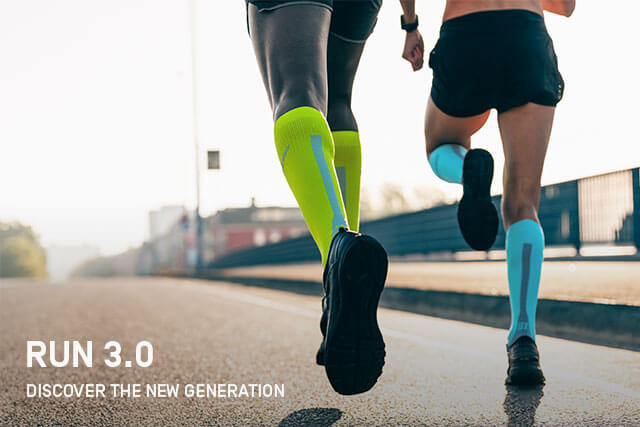As I have been upping my mileage this spring my running has been greatly hampered by my calves. Runs that typically produce very little soreness have left my poor lower legs in knots, and other soft tissue has come under duress, namely my posterior tibialis tendon. To help deal with this strain I turned to compression socks and sleeves. When I was first getting into running I used these garments pretty regularly but haven’t really paid much attention to them in recent years. To make a long story short, they helped, which made me want to do a deeper dive into the current research on compression wear and how it can be of help to athletes.
To really understand how compression socks and sleeves work, it’s important to have a basic understanding of how blood flows through the body. The heart pumps oxygen containing blood to our extremities and working muscles though arteries. Once the cells use the oxygen and other nutrients from the blood, the then de-oxygenated blood, along with lactic acid and other waste products enter the veins to get taken back to the heart. Once the blood gets back to the heart, it’s oxygenated from the lungs and the process is repeated.
Compression also helps to reduce vibration and muscle oscillation that can lead to fatigue and injury. I must say that this has been the biggest benefit to me over the last couple of weeks. While wearing calf sleeves hasn’t completely eliminated the soreness in my calves, it has made running significantly more enjoyable. I recently ran a 50K with said sore calves, and very little training, and I do think that the calf sleeves really helped my poor trashed calves get through the distance.
Digging into the research the reality is that the science is mixed when it comes to wearing compression socks while running. While some studies have shown that the socks improve time to exhaustion and neuro-muscular activation in athletes, others showing no statistically relevant performance gains. The studies that do support wearing them during exercise have come under question because it is hard to rule out the placebo effect of the tighter socks. The science is a bit more in agreement that compression can aid athletes in recovery. A review of over a dozen studies showed compression garments provided a reduction in soreness and muscle damage while helping to more rapidly restore both muscle strength and power. Compression likely helps recovery because it helps to clear out metabolites that accumulate during exercise that contribute to soreness.
While the science may not support wearing compression socks or sleeves while running there is certainly plenty of anecdotal evidence from elite athletes that they help. Sage Canaday, Shalane Flanagan, and Jordan Hasay can all be seen in bright tall socks during their races and they seem to be almost a requisite piece of apparel for triathletes. So what’s the take away here? If you’re looking for something to help you recover from races or hard workouts then compression socks will likely help you feel better faster. I would suggest grabbing a pair for this purpose and try wearing them during some of your runs to see how your body responds, especially if you’re dealing with an injury or soreness in your lower legs.

